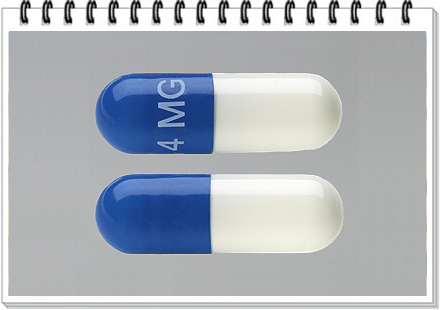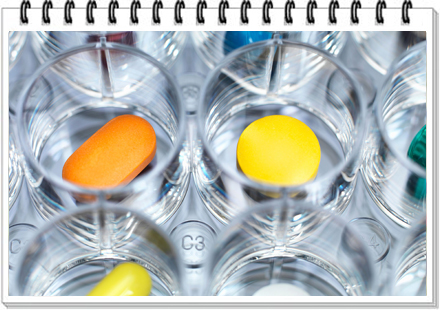
Active Ingredient: Tizanidine
Zanaflex (tizanidine) is a short-acting muscle relaxer. It works by blocking nerve impulses (pain sensations) that are sent to your brain.
About Zanaflex
Zanaflex tablets are supplied as 4 mg tablets for oral administration. Zanaflex tablets contain the active ingredient, tizanidine hydrochloride (4.58 mg equivalent to 4 mg tizanidine base), and the inactive ingredients, colloidal silicon dioxide, stearic acid, microcrystalline cellulose and anhydrous lactose.
Zanaflex Capsules are supplied as 2, 4, and 6 mg capsules for oral administration. Zanaflex Capsules contain the active ingredient, tizanidine hydrochloride (2.29 mg equivalent to 2 mg tizanidine base, 4.58 mg equivalent to 4 mg tizanidine base, and 6.87 mg equivalent to 6 mg tizanidine base), and the inactive ingredients, hypromellose, silicon dioxide, sugar spheres, titanium dioxide, gelatin, and colorants.

Zanaflex Prices
This Zanaflex price guide is based on using the discount cards which is accepted at most U.S. pharmacies. The cost for Zanaflex oral capsule 4 mg is around $3 - $4 depending on the pharmacy you visit. Prices are for cash paying customers and for brand name pills. A generic version is also available, and you can buy Zanaflex online at the lower price.
Mechanism of Action
Food has complex effects on tizanidine pharmacokinetics, which differ with the different formulations. Zanaflex Capsules and Zanaflex tablets are bioequivalent to each other under fasting conditions (more than 3 hours after a meal), but not under fed conditions (within 30 minutes of a meal). These pharmacokinetic differences may result in clinically significant differences when switching administration of tablet and capsules and when switching administration between the fed or fasted state. These changes may result in increased adverse events, or delayed or more rapid onset of activity, depending upon the nature of the switch.
This medication may be available under multiple brand names and/or in several different forms. Any specific brand name of this medication may not be available in all of the forms or approved for all of the conditions discussed here. As well, some forms of this medication may not be used for all of the conditions discussed here.
Side Effects
Zanaflex is a medicine whose side effects vary from person to person. The side effects also depend on the dose you take.
Alcohol increases the overall amount of drug in the bloodstream after a dose of Zanaflex. This was associated with an increase in adverse reactions of Zanaflex. The CNS depressant effects of Zanaflex and alcohol are additive.
Common side effects of Zanaflex include: bradycardia, dizziness, drowsiness, hypotension, asthenia, fatigue, and xerostomia. Other side effects include: constipation, and increased liver enzymes. See below for a comprehensive list of adverse effects.
- drowsiness, dizziness, weakness
- dry mouth
- feeling nervous
- blurred vision
- flu-like symptoms
- abnormal liver function tests
- runny nose, sore throat
- urination problems
- vomiting, constipation or
- uncontrolled muscle movements
Zanaflex can cause sedation, which may interfere with everyday activity. In the multiple dose studies, the prevalence of patients with sedation peaked following the first week of titration and then remained stable for the duration of the maintenance phase of the study. The CNS depressant effects of Zanaflex with alcohol and other CNS depressants may be additive.
Zanaflex use has been associated with hallucinations. Formed, visual hallucinations or delusions have been reported in 3% patients in clinical studies. Most of the patients were aware that the events were unreal.
Zanaflex can cause anaphylaxis. Signs and symptoms including respiratory compromise, urticaria, and angioedema of the throat and tongue have been reported.
Dosage
The recommended starting dose is 2 mg. Because the effect of Zanaflex peaks at approximately 1 to 2 hours post-dose and dissipates between 3 to 6 hours post-dose, treatment can be repeated at 6 to 8 hour intervals, as needed, to a maximum of three doses in 24 hours.

Many things can affect the dose of medication that a person needs, such as body weight, other medical conditions, and other medications.
Dosage can be gradually increased by 2 mg to 4 mg at each dose, with 1 to 4 days between dosage increases, until a satisfactory reduction of muscle tone is achieved. The total daily dose should not exceed 36 mg.
Zanaflex should be used with caution in patients with renal insufficiency and hepatic Impairment. In these patients, during titration, the individual doses should be reduced. If higher doses are required, individual doses rather than dosing frequency should be increased.
Stopping the medication suddenly may cause an increase in blood pressure, rapid heart rate and muscle spasms. It is important to take this medication exactly as prescribed by your doctor. If you miss a dose of this medicine take it as soon as possible, if you remember within an hour or so of the missed dose. If you do not remember until later, skip the missed dose and continue with your regular dosing schedule. Do not take a double dose to make up for a missed one.
Forms And Strengths
1. Capsules
- 2 mg: Light blue opaque body with a light blue opaque cap with "2 MG" printed on the cap
- 4 mg: White opaque body with a blue opaque cap with "4 MG" printed on the cap
- 6 mg: Blue opaque body with a white stripe and blue opaque cap with "6 MG" printed on the cap
2. Tablets
- 4 mg white, uncoated tablets with a quadrisecting score on one side and debossed with "A594" on the other side
Addiction
Tizanidine is closely related to clonidine, which is often abused in combination with narcotics and is known to cause symptoms of rebound upon abrupt withdrawal. Three cases of rebound symptoms on sudden withdrawal of tizanidine have been reported. The case reports suggest that these patients were also misusing narcotics. Withdrawal symptoms included hypertension, tachycardia, hypertonia, tremor, and anxiety. Withdrawal symptoms are more likely to occur in cases where high doses are used, especially for prolonged periods, or with concomitant use of narcotics. If therapy needs to be discontinued, the dose should be decreased slowly to minimize the risk of withdrawal symptoms.
Pregnancy & Nursing mothers
Zanaflex has not been studied in pregnant women. Zanaflex should be given to pregnant women only if the benefit outweighs the risk to the unborn fetus. It is not known whether this drug is excreted in human milk. Because many drugs are excreted in human milk, caution should be exercised when Zanaflex is administered to a nursing woman.
Risk Factors & Precautions
Do not use Zanaflex at a time when you need muscle tone for safe balance and movement during certain activities. In some situations, it may endanger your physical safety to be in a state of reduced muscle tone. Switching between Zanaflex tablets and capsules, or changing the way you take it with regard to eating, can cause an increase in side effects or a decrease in therapeutic effect. Follow your doctor's instructions carefully. After making any changes in how you take Zanaflex, contact your doctor if you notice any change in how well the medicine works or if it causes increased side effects. Do not take more than three doses (36 mg) of tizanidine in a 24-hour period. Too much of tizanidine can damage your liver. Cold or allergy medicine, narcotic pain medicine, sleeping pills, other muscle relaxers, and medicine for seizures, depression or anxiety can add to sleepiness caused by tizanidine. Tell your doctor if you need to use any of these other medicines together with Zanaflex. Avoid drinking alcohol. It can increase some of the side effects of tizanidine.
Treatment
Muscle relaxants are commonly prescribed in the United States but may have deleterious side effects that are unrecognized by physicians. Zanaflex is related chemically to clonidine, but it has significantly lower antihypertensive effects. The main adverse effect for most patients is sedation. Currently, tizanidine is FDA approved for the management of increased muscle tone associated with spasticity resulting from CNS disorders, such as multiple sclerosis or spinal cord injury.
Tizanidine can cause hallucinations. People with a history of mental health concerns, such as psychosis or schizophrenia are more likely to experience this effect. If you have a history of mental health issues, discuss with your doctor how this medication may affect your medical condition, how your medical condition may affect the dosing and effectiveness of this medication.
Related Content
Benefits
The benefits of Zanaflex are related to its effects on the nervous system. The beneficial effects of tizanidine are noticeable within about one hour of taking the first dose. Tizanidine belongs to a group of medications called muscle relaxants. Tizanidine is used to treat spasticity, a condition where muscles in your body spasm, cramp, or become tight due to medical problems such as multiple sclerosis or spine injury. Muscle relaxants work by blocking excess firing of the nerve cells that control muscle movement.

